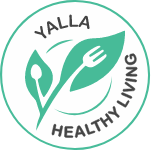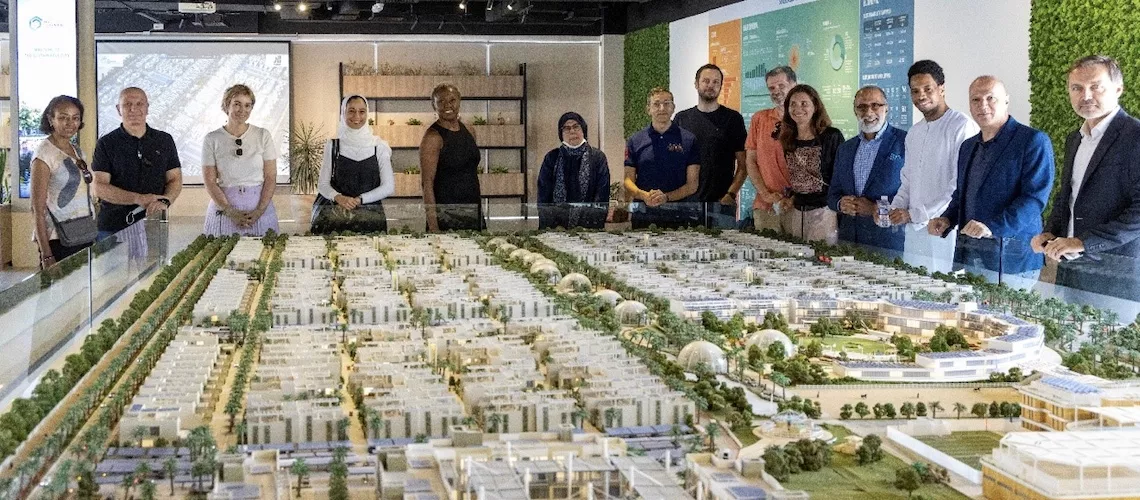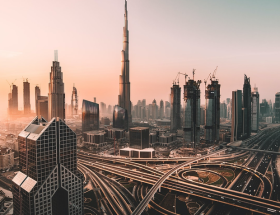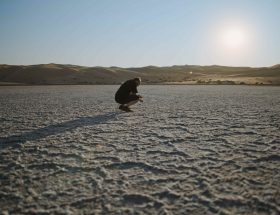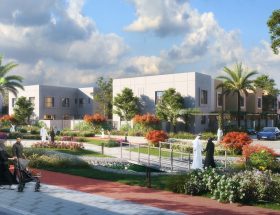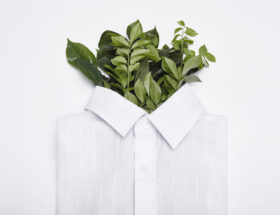The Sustainable City in Dubai, constructed by Diamond Developers, is a private sector real estate company that is spearheading the sustainable building movement. (Photo credit: Diamond Developers)
If the world is to reach its ambitious climate change commitments and avoid catastrophic global warming, green buildings and sustainable cities will be an important part of the solution. It is estimated that the construction sector accounts for approximately 17% of GHG emissions in the Gulf Cooperation Countries (GCC).
Adopting best-practice building techniques can have a tremendous impact on global warming. Developers can make improvements in two areas: upstream construction and downstream operation. Using lightweight facades in construction can limit the energy required and therefore also the emissions released linked to the manufacturing and transport of building materials to the site. Sustainable design can also reduce building impacts on human health and the environment. For example, well-insulated buildings can minimize heating costs in colder countries and reduce cooling costs in warmer countries.
The World Bank’s GCC management team visited one such site to find out more – The Sustainable City in Dubai, constructed by Diamond Developers, a private sector real estate company that is spearheading the sustainable building movement.
With a community-based and strong sustainability ethos, the developers set about building a 500-unit community in the heart of Dubai, including a school and an autism rehabilitation center, as well as recreational facilities like an equestrian center.
For a city that regularly experiences temperatures in excess of 40o centigrade for 4 to 5 months of the year, climate is a challenge. Developers must be able to cool indoor spaces. But Dubai’s climate is also an opportunity, as it has the potential to generate significant amounts of solar energy, not only for their own use but also to export back to the grid.
In the compound, solar panels top almost all the buildings and car parking spaces, generating enough energy to meet most of the community’s needs. South-facing facades are closed to block the sun while well-insulated windows are placed on the northern frontages. All surfaces are light-colored to reflect the sun and reduce air-conditioning loads.
A “green spine” runs down the middle of the community providing green, lush landscapes and, more importantly, space for several biodomes housing sustainable kitchen garden plants and vegetables for local consumption. Management reports the ability to grow up to 4 tons of strawberries in a single container-sized vertical farming facility. Residents are also encouraged to grow their own food in allotments adjacent to their properties using organic practices.

Photo credit: Diamond Developers
The community also promotes soft mobility such as shaded walking (more than 80% of the development is car-free) and cycling. Shared electric buggies are the chief mode of motorized transport within the community and a growing number of residents are choosing to benefit from on-site charging points with the purchase of electric vehicles. The developer has deliberately targeted local businesses rather than global franchises to their central marketplace, thus creating jobs for residents and promoting local products.
Diamond Developers is a privately owned company which means it relies entirely on a commercially profitable real estate model that must make commercial sense to the company and to end-users. The community proves the adage that “green is green,” with no inherent tradeoff between sustainable practices and financial rewards.
At the World Bank, we promote urban development that builds sustainable cities and communities through an urbanization process that is inclusive, resilient, low-carbon, productive, and livable, in order to contribute to the UN Sustainable Development Goal 11. The Bank invests an average of US$6 billion in urban development and resilience projects every year.
This is why we were interested to visit this site to learn about best-practices in the field and within the private sector community that can be emulated not only across Middles East and North Africa (MENA), but across the World.
The results are remarkable. In 2021, this community in Dubai avoided more than 8,000 tons of CO2e roughly equivalent to removing 853 cars from the roads for a year. Average daily water consumption stands at 162 liters/capita compared to Dubai’s average of 278. And more than 80% of household waste is sorted and recycled.
With such an emphatic proof of concept, this shows that governments can indeed adopt stricter and greener building codes to promote sustainable materials, better insulation, and energy efficiency. The UAE has taken steps in this direction. Abu Dhabi introduced the Pearl Rating System in 2010 – a framework for sustainable design, construction, and operation of all new construction, specifically tailored to the hot climate and arid environment. In 2016, Dubai adopted the Al Sa’fat green rating system. Structures that do not meet the minimum bronze rating are not given permits. However, higher ratings are optional in both systems and standards vary across the country. To achieve deep emissions reduction in the construction sector, governments and regulators could introduce incentives that will encourage developers and builders to adopt lower carbon construction materials and methods.
Governments around the world can disseminate such practices through construction industry associations and related stakeholder institutions. Our future depends on it.
